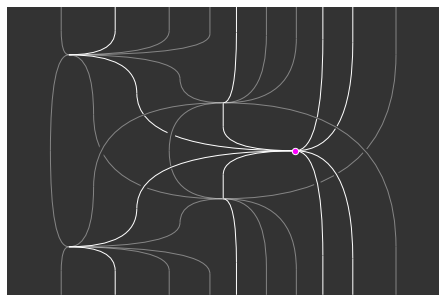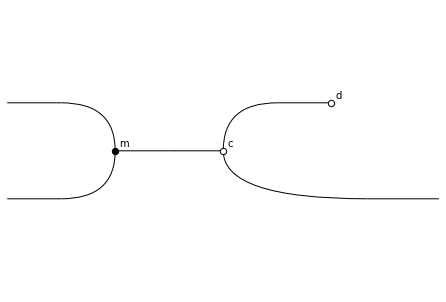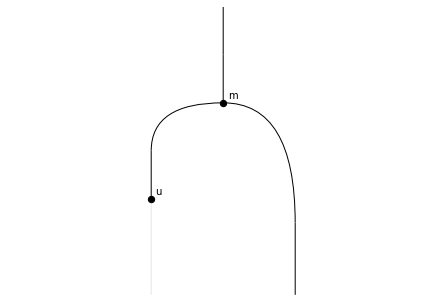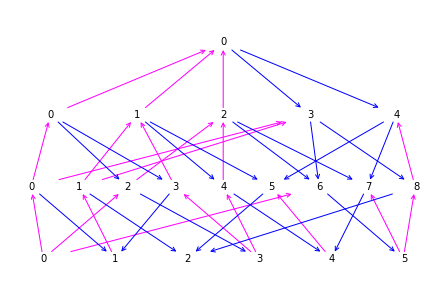- (archaic) to overturn, throw down
- a library for rewriting, algebra, and topology, developed in Tallinn (aka Reval)
rewalt is a toolkit for higher-dimensional diagram rewriting, with applications in
- higher and monoidal category theory,
- homotopical algebra,
- combinatorial topology,
and more. Thanks to its visualisation features, it can also be used as a structure-aware string diagram editor, supporting TikZ output so the string diagrams can be directly embedded in your LaTeX files.
It implements diagrammatic sets, which, by the "higher-dimensional rewriting" paradigm, double as a model of
- higher-dimensional rewrite systems, and of
- directed cell complexes.
This model is "topologically sound": a diagrammatic set built in rewalt presents a finite CW complex, and a diagram constructed in the diagrammatic set presents a valid homotopy in this CW complex.
A diagrammatic set can be seen as a generalisation of a simplicial set or of a cubical set with many more "cell shapes". As a result, rewalt also contains a full implementation of finitely presented simplicial sets and cubical sets with connections.
rewalt is available for Python 3.7 and higher. You can install it with the command
pip install rewaltThen you should take a look at the documentation, which includes several worked examples from category theory, algebra, and homotopy theory.
The docs/notebooks/ folder contains several worked examples in the form of Jupyter notebooks.
For example, this is how you create a single-sorted algebraic signature with one binary operation
from rewalt import DiagSet
X = DiagSet()
pt = X.add('pt', draw_label=False)
a = X.add('a', pt, pt, draw_label=False) # the sort
m = X.add('m', a.paste(a), a) # binary operation
u = X.add('u', pt.unit(), a) # constant
m.to_inputs(0, u).draw()This is how you construct a 3-dimensional diagram shape as an "oriented cylinder" whose bases are 2-simplices, then output its oriented face poset in the form of a Hasse diagram with magenta edges for input faces, and blue edges for output faces.
from rewalt import Shape
twosimplex = Shape.simplex(2)
arrow = Shape.arrow()
cylinder = arrow * twosimplex # Gray product of arrow and 2-simplex
cylinder.hasse(labels=False)You can run all tests with the command
pytestThe latest documentation is hosted on Read the Docs.
If you want to build a local copy of the documentation, first install the required dependencies:
pip install -r docs/requirements.txtThen run
cd docs/
make clean
make htmlYou will then find the documentation under docs/_build/.
For a first introduction to the ideas of higher-dimensional rewriting, diagrammatic sets, and "topological soundness", you may want to watch these presentations at the CIRM meeting on Higher Structures and at the GETCO 2022 conference.
A nice overview of the general landscape of higher-dimensional rewriting is Yves Guiraud's mémoire d'habilitation.
So far there are two papers on the theory of diagrammatic sets: the first one containing the foundations, the second one containing some developments applied to categorical universal algebra.
A description and complexity analysis of some of the data structures and algorithms behind rewalt will be published in the proceedings of ACT 2022.
rewalt is distributed under the BSD 3-clause license; see LICENSE.
Currently, the only active developer of rewalt is Amar Hadzihasanovic.
Contributions are welcome. Please reach out either by sending me an email, or by opening an issue.



